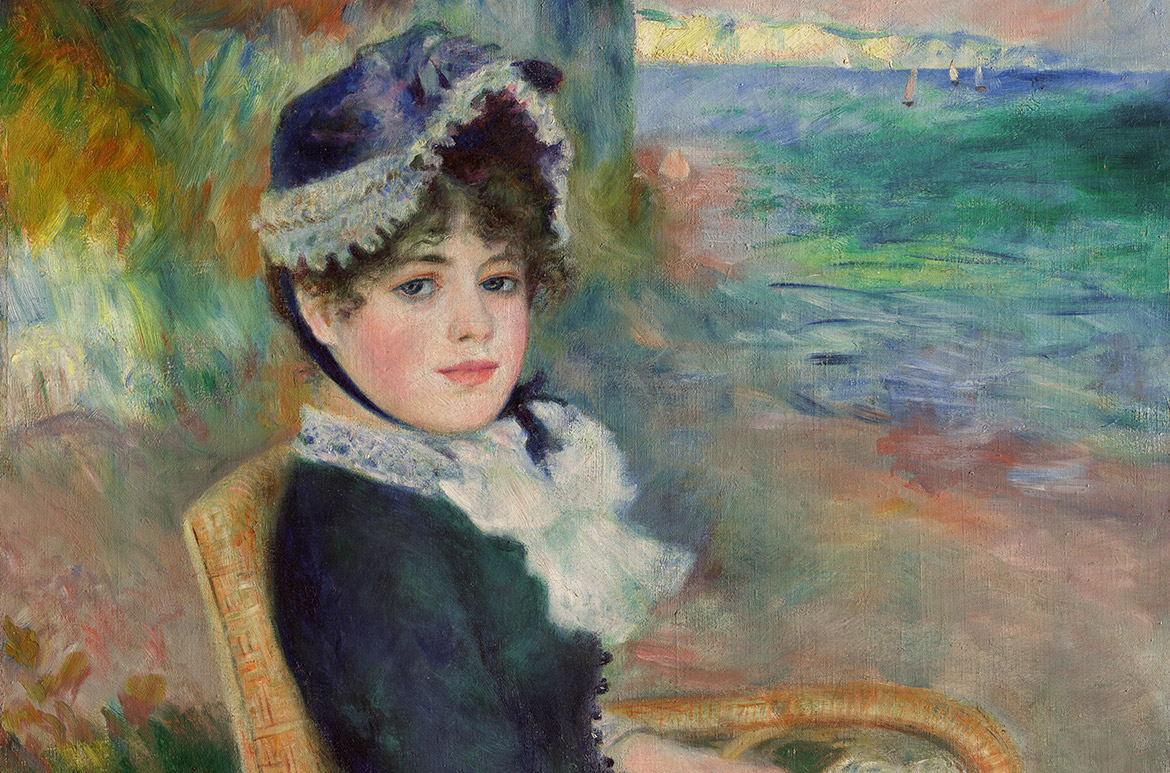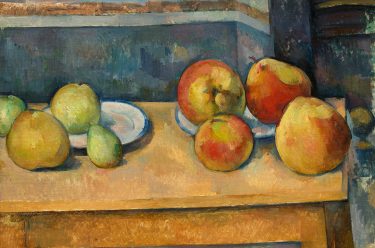Auguste Renoir (1841–1919) was a founding member of the Impressionists — with Claude Monet, Edgar Degas and Alfred Sisley and later, Paul Gauguin, Vincent van Gogh and Paul Cézanne — a group of artists who painted in Paris in the mid-1800s. In defiance of academic tradition, they painted out of doors and used a bright colour palette with visible broken brushstrokes to capture an impression of quickly shifting light and atmosphere.
LIST OF WORKS: Discover the artworks
DELVE DEEPER: Read more about the exhibition
THE STUDIO: Artworks come to life
WATCH: The Met Curators highlight their favourite works

‘By the Seashore’ 1883
Auguste Renoir is known for his scenes of outdoor leisure, beautiful female sitters and dazzling impressions of sunlight. By the Seashore 1883 is awash with greens and blues, offset by warm accents of yellow, orange and pink drawn together in Renoir’s famously feathery brushstrokes. While his painting style appears to be spontaneous, it was the result of careful planning. Posing his model in a wicker chair, the painting was most likely created in his studio from sketches of the Normandy seaside to furnish the beach scene behind her, rather than painted en plein air.
There is an unusual division between the background and figure in this work, typical of Renoir’s mature paintings. The sky is an indistinct blend of colours, while the woman appears in sharp focus, as if they occupy different worlds. This enables the viewer to delight in both the woman’s finely rendered facial features and the more freely painted landscape. This figure is somewhat unusual in Renoir’s vast series of coy, side-glancing women; unlike them, she turns to face us directly.
Stylistically, it reflects the impact of Renoir’s trip to Italy in 1881–82, which inspired him to unite the ‘grandeur and simplicity’ he admired in Renaissance art with the luminosity of Impressionism. His new approach, which he called his ‘dry’ manner, is evident in the sitter’s face, with its carefully drawn features and smooth handling of paint. The medley of quick strokes in the background, however, displays the freer technique of Renoir’s earlier years.
Who is the woman in the painting? Aline Charigot was a model for Renoir and later became his wife in 1890 while continuing to model for him.

‘A Young Girl with Daisies’ 1889
‘I have taken up again, never to abandon it, my old style, soft and light of touch’, Auguste Renoir announced to his dealer Durand-Ruel in 1888. A Young Girl with Daisies 1889, made the following year, exemplifies the artist’s predilection for equally gentle and lyrical subjects. Daises and other wildflowers lend a note of rustic charm to the sweet-faced model.
This young girl with auburn hair appears in a number of Renoir’s nudes from the 1880s and 1890s, depicted here with a characteristically innocent and dreamy expression. This painting dates from a period when Renoir had moved away from his association with Impressionism to develop a classically informed style. He visited Italy on several occasions during the 1880s, where works by the old masters had a great impact on him. From this time, Renoir’s figures took on more sculptural proportions and warmer colours.
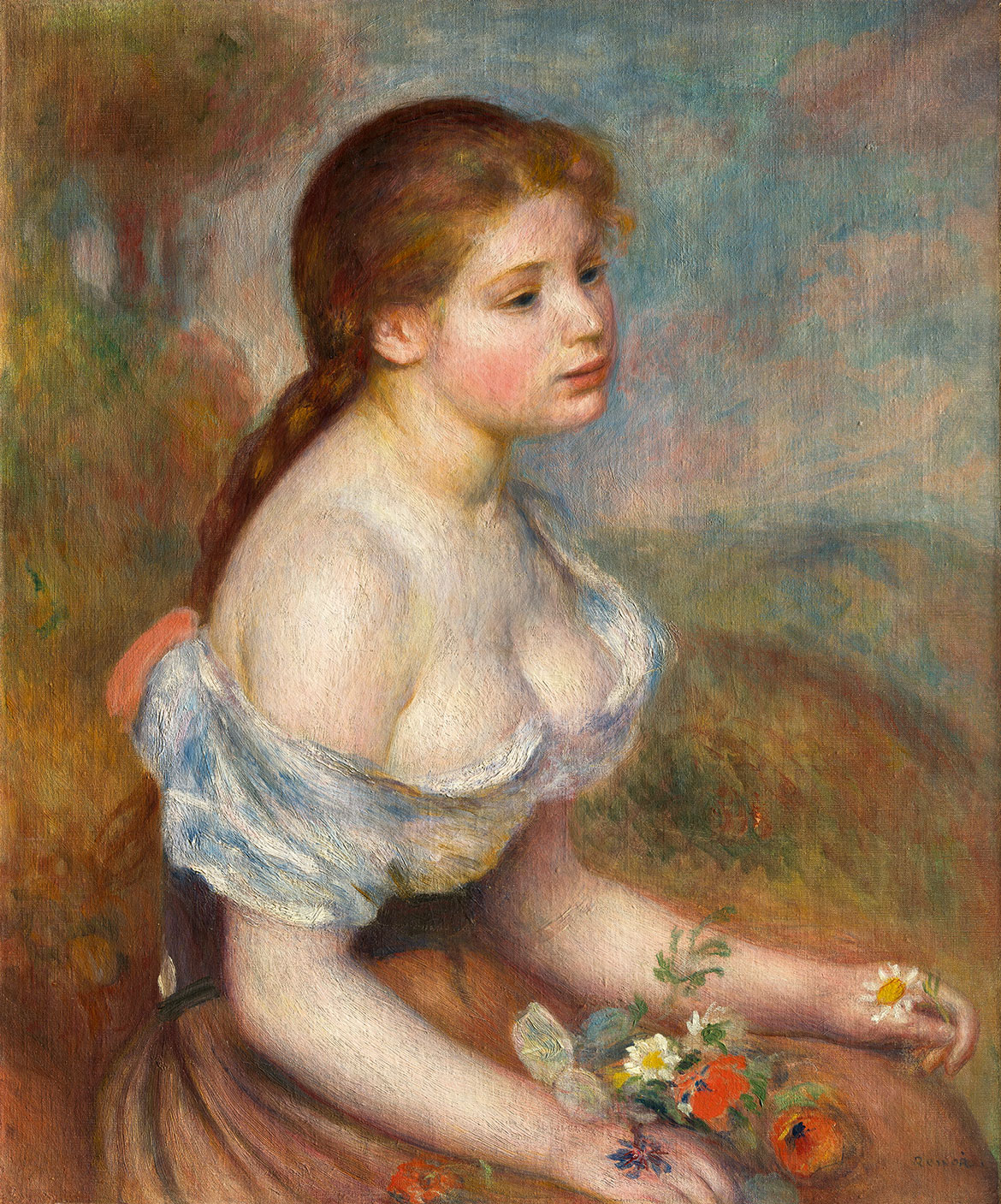
Place yourself in ‘By the Seashore’ at GOMA
For the duration of ‘European Masterpieces’, The Studio located within the exhibition space offers an array of experiences — whether through multimedia interactives or opportunities to draw from life. An immersive theatrical experience will transport you to historical Europe through the exhibition’s themes in distinct zones and vignettes. Draw using supplied materials, and take inspiration from their surroundings to create your own work.
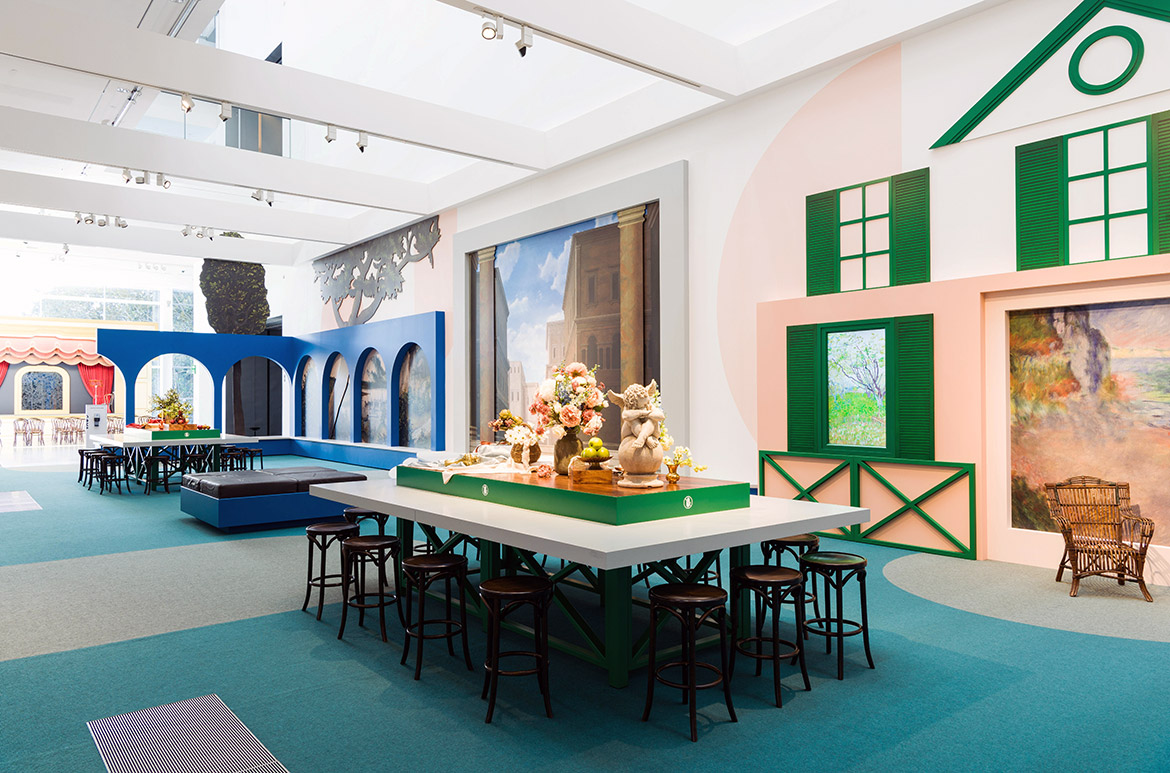
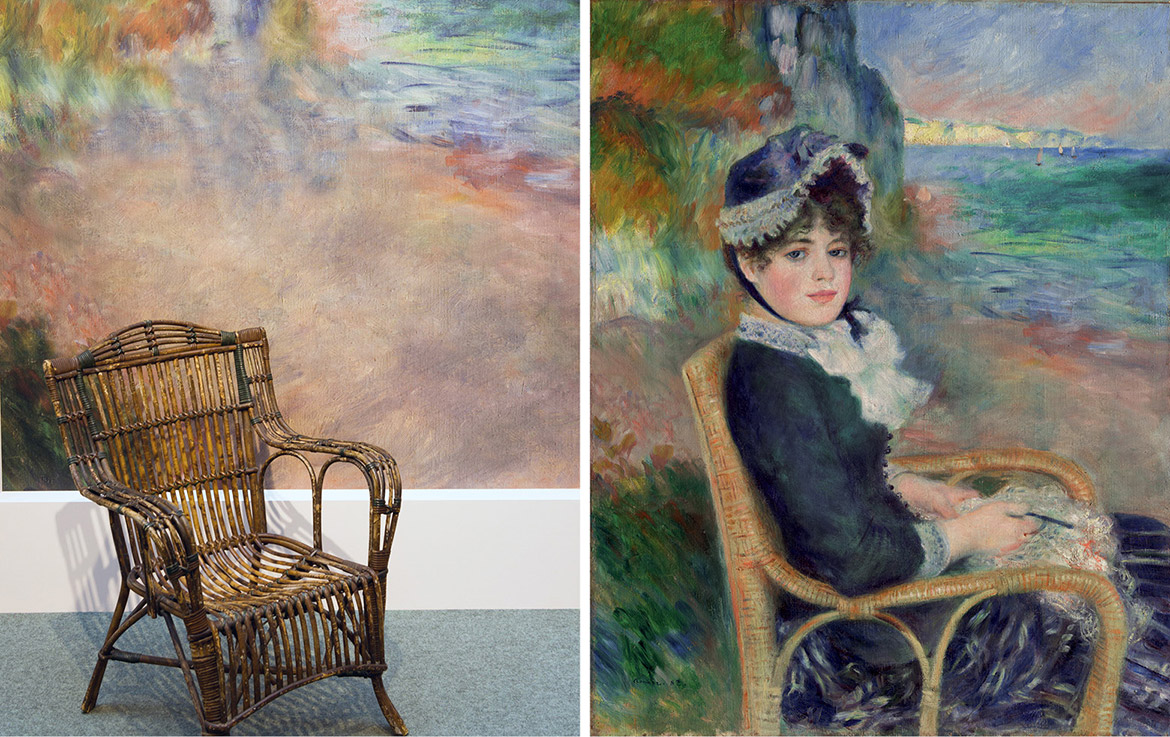
‘Coco et Jean’ c.1904-5
Did you know that QAGOMA has Coco et Jean c.1904-5 in its permanent collection?
Despite first impressions, the two children depicted in Coco et Jean with beautiful long hair are Renoir’s sons, Coco (Claude) and Jean. Renoir reputably loved their hair so much he refused to have it cut until they went to boarding school. There are a number of paintings showing the boys with their long tresses tied back by pink ribbons.
Renoir regularly visited Essoyes, a village where his wife Aline Charigot was born, and it is likely that this painting was completed there. As the city of Paris grew and industrialised, it began to encompass its rural outskirts. Artists like Renoir and Monet increasingly retreated to the countryside, where they established residences for themselves and their families.
In works such as Coco et Jean, Renoir was inspired by classical painting, and the colours and sensuality of Peter Paul Rubens and Titian.
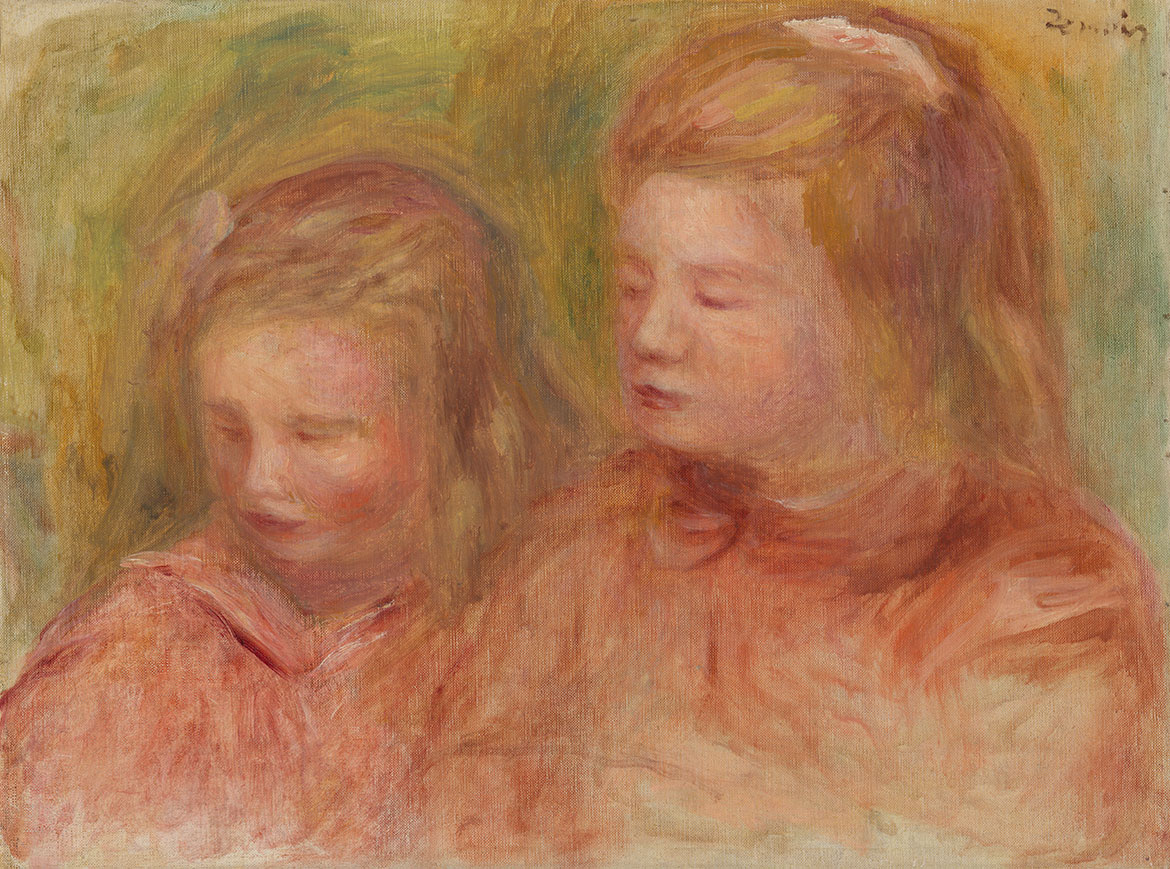
This Australian-exclusive exhibition was at the Gallery of Modern Art from 12 June until 17 October 2021 and organised by The Metropolitan Museum of Art, New York, in collaboration with the Queensland Art Gallery | Gallery of Modern Art and Art Exhibitions Australia.
#QAGOMA #TheMetGOMA
